Did you know apps–fun ones that really help kids learn–can be more revealing than standardized tests in assessing your child’s ability to understand? Our expert helps you bring teacher-approved apps out of the classroom and into your home. This is the second in a six-part educational app series–our first talked about “Remembering” apps.
 “Understanding”* occurs when new learning connects to prior knowledge. At this point, students have the ability to make sense of what they have read, viewed, or heard, and can explain this understanding clearly and succinctly to others. This particular learning stage balances precariously between communicating understanding and expressing opinion. Here children demonstrate the ability to identify the main idea, generalize new material, translate verbal content into a visual form, transform abstract concepts into everyday terms, or make predictions.
“Understanding”* occurs when new learning connects to prior knowledge. At this point, students have the ability to make sense of what they have read, viewed, or heard, and can explain this understanding clearly and succinctly to others. This particular learning stage balances precariously between communicating understanding and expressing opinion. Here children demonstrate the ability to identify the main idea, generalize new material, translate verbal content into a visual form, transform abstract concepts into everyday terms, or make predictions.
Writing and speaking are the most common way teachers check for understanding, but mobile technology is helping to break this traditional mold. With the wealth of media creation apps available, rich opportunities for children in kindergarten through fifth grade to express understanding are literally at their fingertips. Parents as well as classroom teachers can carefully curate an app environment on a mobile device that differentiates the learning process and honors the individual’s ability to make choices. Multimedia presentations can highlight students’ ability to summarize and explain key ideas. Using video and audio apps is also an effective way to document learning–together these media files serve as an alternative form of assessment far more revealing than the often-used standardized bubble test.
|
UNDERSTANDING Apps that fit into the “understanding” stage provide opportunities for students to explain ideas or concepts. Verbs commonly used to describe this phase include interpreting, restating, retelling, summarizing, inferring, generalizing, comparing, rephrasing, translating, reporting, clarifying, and paraphrasing. The best apps to help kids with understanding step away from the selection of a “right” answer and introduce a more open-ended format for students to summarize content and translate meaning. |
photostory HD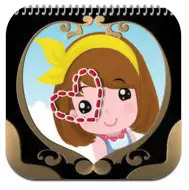
The original purpose of Photostory was to develop babies’ receptive and oral language skills. However, it also holds promise as an app for second-language students. In many ways, this is a traditional “remembering” app. The child selects the right answer by tapping the picture, but the simple integration of a story recording function notches the higher-level thinking up a bit. The voice recording option provides an opportunity for students to paraphrase what they are learning in their own words. The adult can also personalize a child’s learning experience by uploading photographs of shared learning experiences and developing unique questions for the child to answer. Target understanding skills directly: Instead of asking children to find a certain object, ask them to pick an object that is the best answer out of several suitable choices. This app’s ingenious integration of voice recording is a great way to offer students a chance to articulate personal understanding. The embedding audio/video recording or a response journal within a learning app is a promising feature. ($1.99)
Lifecards – Postcards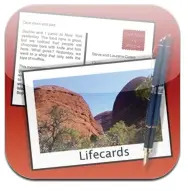
Translating the meaning of a graphic into writing and vice versa is another example of “understanding.” With the Lifecards app, students can import a graph, chart, historic photograph, diagram, or even a political cartoon onto one side of a postcard and then use a letter-writing format to explain the graphic on the other side. The limited space for writing will demand that communication immediately address the content’s main idea and force children to determine what information is the most significant. Adults can also choose to provide the writing instead and ask kids to create a visual representation of the letter’s contents. Photographs taken with a mobile device or graphics saved in the iPhoto library can be used. I am sure the creators of Lifecards had different intentions for their app, but its beautifully designed features prove to have many possible uses. ($1.99)
iLiveMath 
The iLiveMath apps present word problems that are full of rich vocabulary and gorgeous photographs. Each app contains three levels of difficulty and includes basic questions directed at adding, subtracting, dividing, and multiplying. They each also address a separate subset of skills such as speed, distance, time, fractions, counting, geometry, money, mean, median, mode, and range. Instead of selecting an answer from a multiple-choice lineup, iLiveMath employs the use of a number wheel that has the potential for holding 12 or more possible answers. At the end of a session, it is possible to review performance results and email them. The themes of each app connect to other subject areas such as science, history, or technology. Each app’s unique subject matter comes with supportive links to educational sites and short video clips. This is a rich series of educational apps that will assist a child’s understanding of how to solve a word problem and connect to subjects found in the real world, and will also spark curiosity. ($4.99)
ShowMe Interactive Whiteboard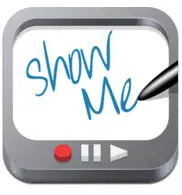
ShowMe is an interactive whiteboard that can record a screencast on the iPad. It will import photos or graphics from iPhoto, has simple drawing tools, an eraser, and voice recording. Having a tool that incorporates graphics with voice recordings provides a wonderful opportunity for students to translate material they have read. Consider asking children to narrate a map of a character’s journey, create a timeline, sketch diagrams, animate a recording of the water cycle, or explain the results from a group poll. An account must be created in order for users to save work to showme.com. Uploading content to this site will provide an embed code, and enable the ability to email the file or post it to Twitter or Facebook (also making it easier for parents to brag about their kids’ work!). (FREE)
Motion Math HD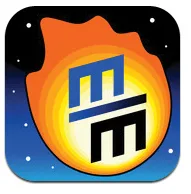
Learn fractions and decimals while tilting and turning the iPad. This app definitely wins the “Fun Factor Award.” Perfect for the kinesthetic and visual learner, Motion Math intermingles a variety of ways to recognize fractions. The graphic representations of the fractions alternate between numerator over denominator, pie charts, decimals, and percentages. The goal of the game is to identify the correct answer by bouncing a flaming star at the correct point on a number line. Users need to constantly correlate a wide selection of fractions to a continually varying sequence of numbers. The diverse representation of fractions is a great way for children to make connections between separate areas of prior knowledge. With its constant translation of one symbolic form of a fraction to another, this app is prompting users to develop a deeper understanding of fractions. The app also responds to user performance and will automatically increase or decrease the level of difficulty. ($1.99)
Strip Designer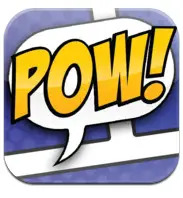
Ask students to retell the sequence of events in a Revolutionary War battle, folktale, science experiment, or the states of matter in the context of a graphic novel. Strip Designer can import maps, images from iPhoto, or photographs taken with a mobile device directly into a comic strip template. There is a wonderful selection of fonts, colors, text balloons, stickers, paper backgrounds, frames, and filters from which to pick. Students will need to choose a page template that best matches the number of events they plan to retell. With all these wonderful graphic features, it will be a challenge for students to explain events succinctly while sticking to the facts. When the graphic novels are complete, simply save the comics to iPhoto, print them out, or email as a JPEG, PNG, or PDF file. The app will also connect to Facebook, Flickr, or Twitpic. Retelling events in comic strip format is definitely a great way to build understanding skills and spice up a traditional paper-and-pencil report. ($2.99)
Question Builder for the iPad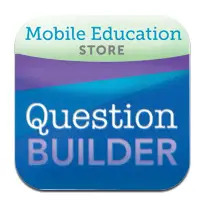
Mobile Education Tools makes a wonderful series of apps meant to help elementary age children with special needs develop language skills. Question builder targets a child’s ability to use inference to answer an abstract question. The questions come in five formats (what, how, why, where, and random) and function at three different levels of difficulty. Many users can share accounts within the same app and still receive a complete summary report. These reports detail performance in each question category and level. This app models how Benjamin Bloom imagined inference operating at the “understanding” level. Question Builder is asking young children to carefully consider the explicit information given in an illustration and then predict the intended meaning. Every elementary student will benefit from developing this thinking skill. ($5.99)
Bluster!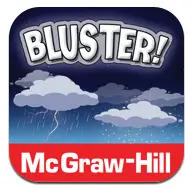
Bluster helps students develop vocabulary skills while learning to recognize word patterns. In order to answer a question, students need to select three words from a list that share a common relationship. For example: locate three rhyming words, words with common prefixes or suffixes, synonyms, homophones, adjectives, or word roots. The passing parade of words becomes shorter each time a student selects a new trio. Adjust the Bluster settings to meet the instructional needs of students between second and fourth grade. Students can play the game alone, as a team member, or choose to take on a head-to-head competition. (FREE)
* Without getting too technical (hey, we’re not all certified teachers!), this series on apps is based on an updated version of Bloom’s Taxonomy–an educational theory which essentially delineates the six cognitive processes that lead to true learning and critical thinking: Children must be able to remember, understand, apply, analyze, evaluate, and create. We’ll cover apps for each of these skills in upcoming issues, courtesy of edutopia.org. And if you missed the first installment in our series, be sure to check out “App-Mazing Remembering Tools.”
Diane Darrow is an artist, reading recovery teacher, and library media specialist. You can follow her on Twitter at @dianedarrow, and find more of her valuable educational insights (including more in her series on the best educational apps) at edutopia.org.




















